


Canon 40D, iso 800, Canon EF 17-40mm f/4 L, 17mm, f/5.6, 10 sec.
Canon 40D, iso 640, Canon 10-22 mm, 10mm, f/3.5, 10 sec.

Canon 6D, iso 1600, Tamron SP 15-30mm f/2.8 Di VC USD, op 15mm en f/2.8, 3 sec.
Canon 6D, iso 6400, Canon EF 16-35mm F/4 L IS, 16mm, f/4, 1 sec.
Canon 6D, iso 1000, Zeiss 21mm f/2.8 Distagon T* ZE, op f/2.8, 10 sec.
Fujifilm X-M1, iso 1000, Fujinon XF 27mm f/2.8, f/2.8, 2 sec.
Canon 6D, iso 1600, Sigma 14mm f/1.8 DG HSM Art, f/1,8, 2,5 sec.

Photographing the Northern Lights is rewarding work and the Lofoten is an excellent location. What appears to the naked eye to be a faint white cloud or arc in the sky is already beautiful green in the photo. The sensors of modern cameras and mobile phones capture more light and colors than our eyes. And photographing the Northern Lights is not difficult.






Canon 6D, iso 1600, Tamron SP 15-30mm f/2.8, 15mm, f/2.8, 2,5 sec.
Canon 6D, iso 1600, Samyang 14mm f/2.8 IF ED UMC, f/2.8, 6 sec.
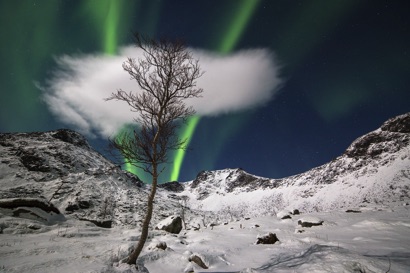



Canon 6D, iso 1250, Samyang 14mm f/2.8 IF ED UMC, f/2.8, 8 sec.
Canon 6D, iso 1250, Sigma 14mm f/1.8 DG HSM Art, f/1,8, 4 sec.
Canon 6D, iso 3200, Tamron SP 15-30mm f/2.8 Di VC USD, op 15mm en f/2.8, 5 sec.
Canon 6D, iso 1600, Tamron SP 15-30mm f/2.8 Di VC USD, op 15mm en f/2.8, 13 sec.
Northern lights photography
Photographing northern lights
Which camera for Northern Lights?
Nowadays you can take nice Northern Lights photos with mobile phones. Good for the screen. However, I only use my mobile to check whether that white cloud is indeed Northern Lights. If I see some green, I reach for my real camera. If you want to print photos, that's still best.
A small compact camera is a bit difficult. But almost any camera, with or without mirror, whose lenses can be changed, is suitable nowadays: micro four thirds (MFT), crop cameras (APS-C) and full frame cameras. In reverse order, the cameras perform best for Northern Lights, though.
I use a full frame Canon 6D and Canon 5D4. An MFT camera may be usable up to ISO 1600, the full frames even deliver good photos at ISO 6400.
Which lens for Northern Lights?
A large wide angle that is bright is preferable. So 14mm, 16mm, 20mm or 24mm, with an aperture of approximately f/1.8, f/2.8 or f/4.0. Here on the Lofoten Islands the Northern Lights can be straight above your head. If you want a bit of landscape in the picture, you will quickly need 14mm or 16mm. If the aurora is a little lower above the horizon, you can also get by with less wide angle.
The brighter, a large aperture, the better. Then you can limit the ISO a bit. But I took plenty of beautiful photos with an APS-C camera with an f/4.0 lens. So that is also possible.
I work most with a Tamron 15-30mm f/2.8 and a Sigma 14mm f/1.8. The Samyang 14mm f/2.8 also does very well.
Which settings?
That really depends on the light and the landscape. A little moonlight on a snowy landscape provides more light than you would expect. A moonless night over a landscape without snow is quite dark.
But you have to start somewhere. Set the camera to M, the manual mode. Choose ISO 1600, your largest aperture and start with a 10 second shutter speed. Check the screen to see if the photo is properly exposed. Too dark? ISO up or longer shutter speed. Too light? Shutter speed down.
Please note that Northern Lights can change in strength quickly. Suddenly that faint whitish arc becomes active and starts to wave. Sometimes the Northern Lights stand above your head like an umbrella. These are times when I often increase the ISO considerably, to 3200 or 6400, to get the shortest possible shutter speed, sometimes up to 1 second. This way you catch much more detail in the northern lights - otherwise everything becomes one green soup.
Focusing is can be an issue. It's dark, so that's difficult. If possible, I focus with the autofocus on a (street) lamp far away or on the moon and then set the camera or lens to manual focus (M). Then I know that I have focused on infinity and stars become fine dots and not white spots. You can also try looking at the camera screen and then manually focusing on stars, a planet or the moon. In any case, eventually take the lens off the auto-focus, otherwise it will keep hunting and you won't even be able to take the shot.
And further?
Dress warmly of course, be patient. But also important: know where to find all the buttons and settings on your camera. So you can quickly change shutter speeds and ISO settings even in the dark. Then you don't have to fiddle with flashlights, ruining other people's photos and blinding yourself. Let your eyes get used to the darkness and you will see the Northern Lights better.
Tripod?
Yes, a tripod is needed. See the shutter speeds above – you won't get a sharp photo without a tripod. Don't forget to turn off the stabilizer on your lens. The camera is on a tripod, there is nothing to stabilize, and if it is turned on it can cause annoying effects in your photo.
Canon 5D2, iso 1600, Zeiss 21mm f/2.8 Distagon T* ZE, f/3,5 op 13 sec.
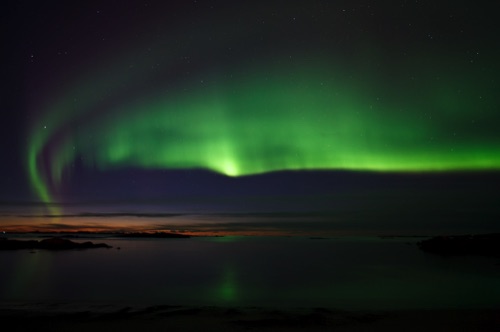
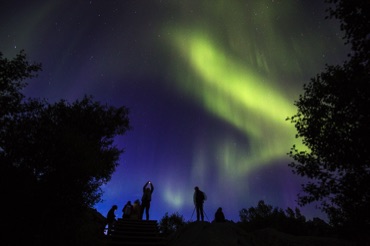
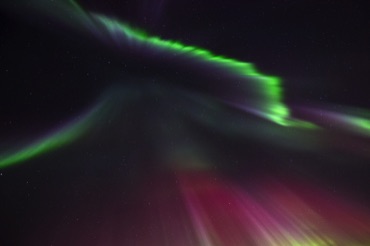
Canon 6D, iso 6400, Tamron SP 15-30mm f/2.8, 15mm, f/2.8, 2 sec.
Canon 6D, iso 2500, Tamron SP 15-30mm f/2.8, 15mm, f/2.8, 2,5 sec.
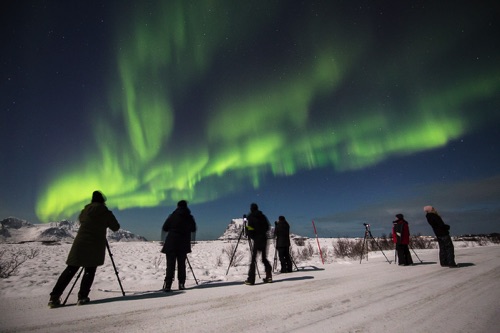
Canon 6D, iso 6400, Tamron SP 15-30mm f/2.8, 15mm, f/2.8, 1,3 sec.
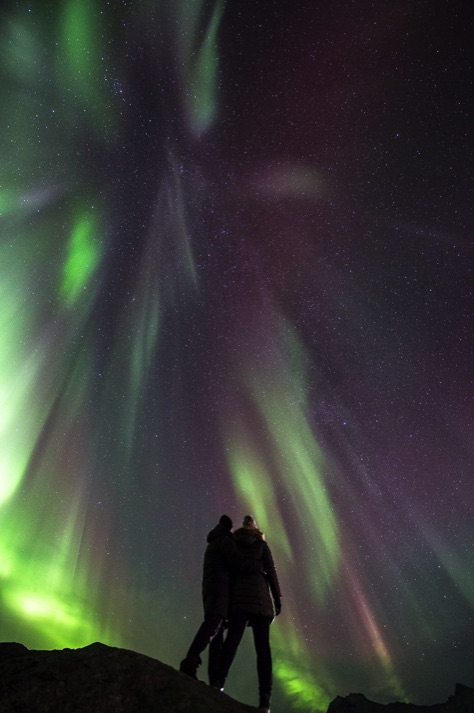
Canon 6D, iso 6400, Tamron SP 15-30mm f/2.8, 15mm, f/2.8, 5,0 sec.
To get an idea of cameras, lenses and settings used, take a look at the photos below.

Home sweet home! Here we live
Canon 5D4, iso 3200, Sigma 14mm f/1.8, 14mm, f/1.8, 1 sec.
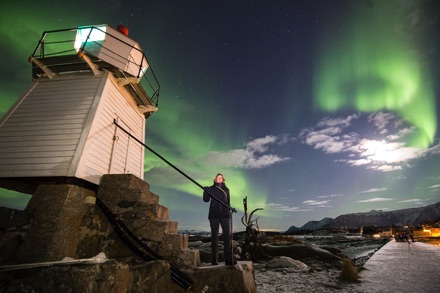
Canon 6D, iso 6400, Tamron SP 15-30mm f/2.8, 15mm, f/2.8, 2,5 sec.